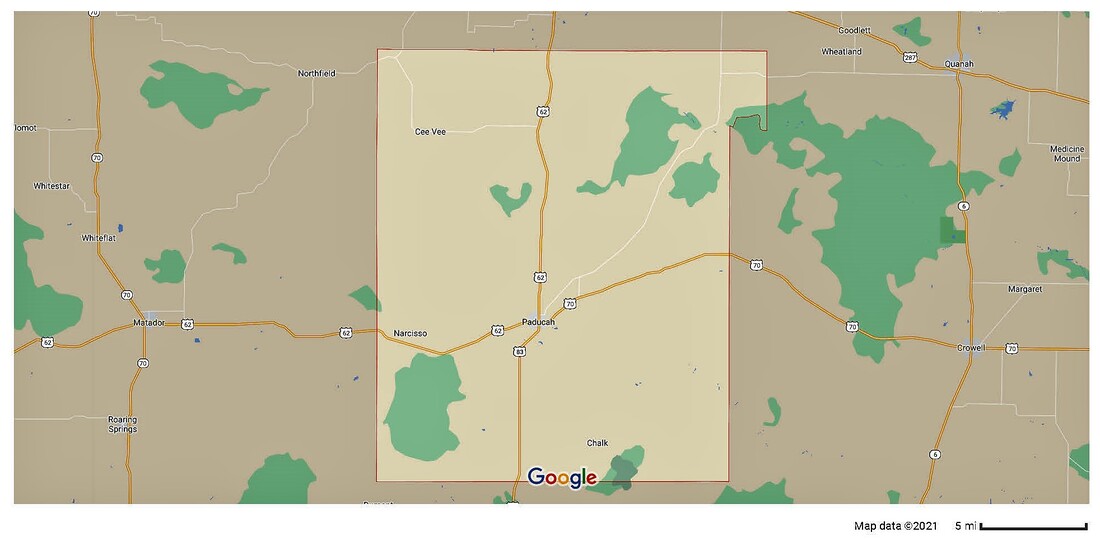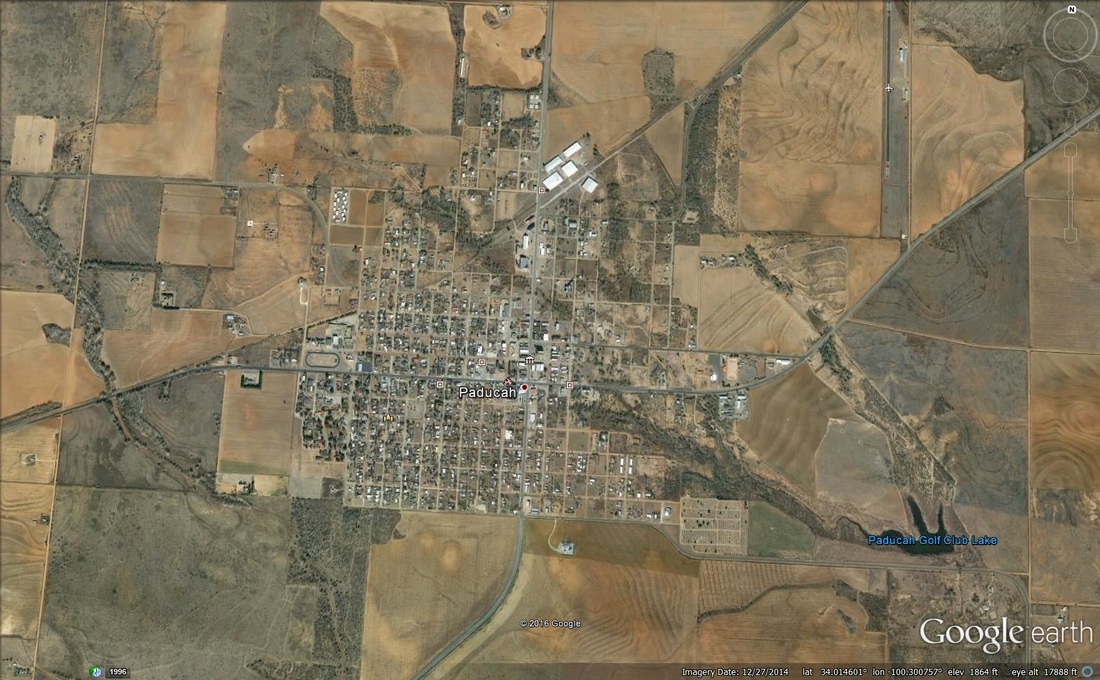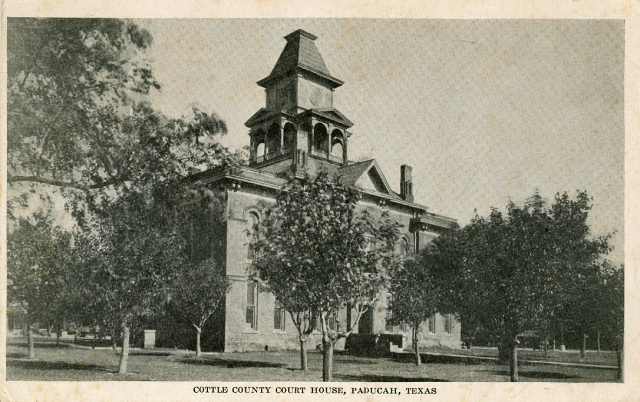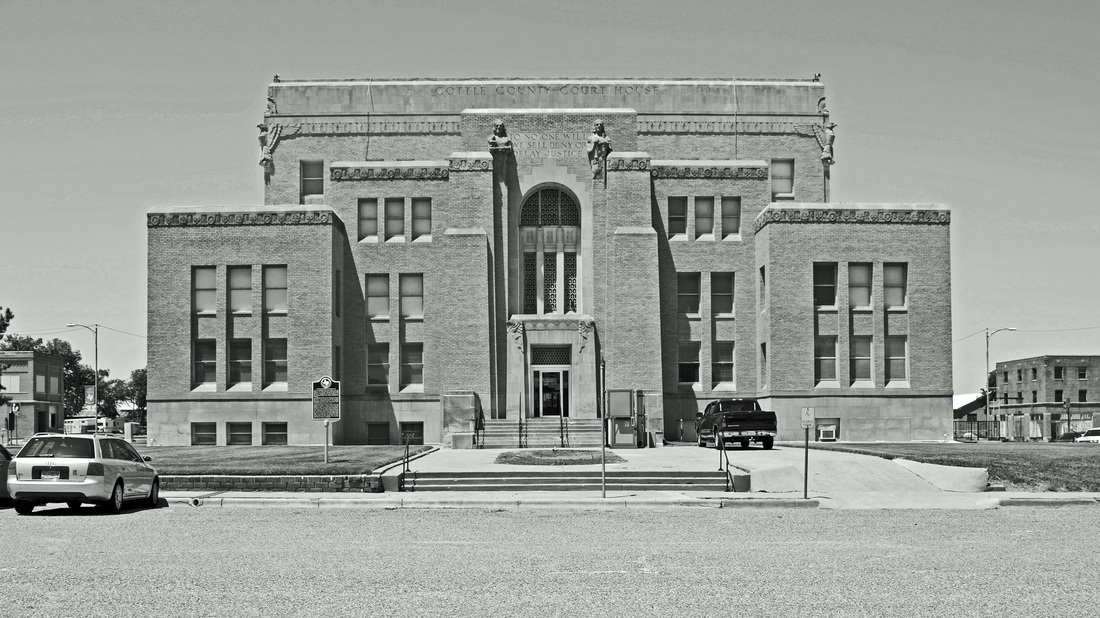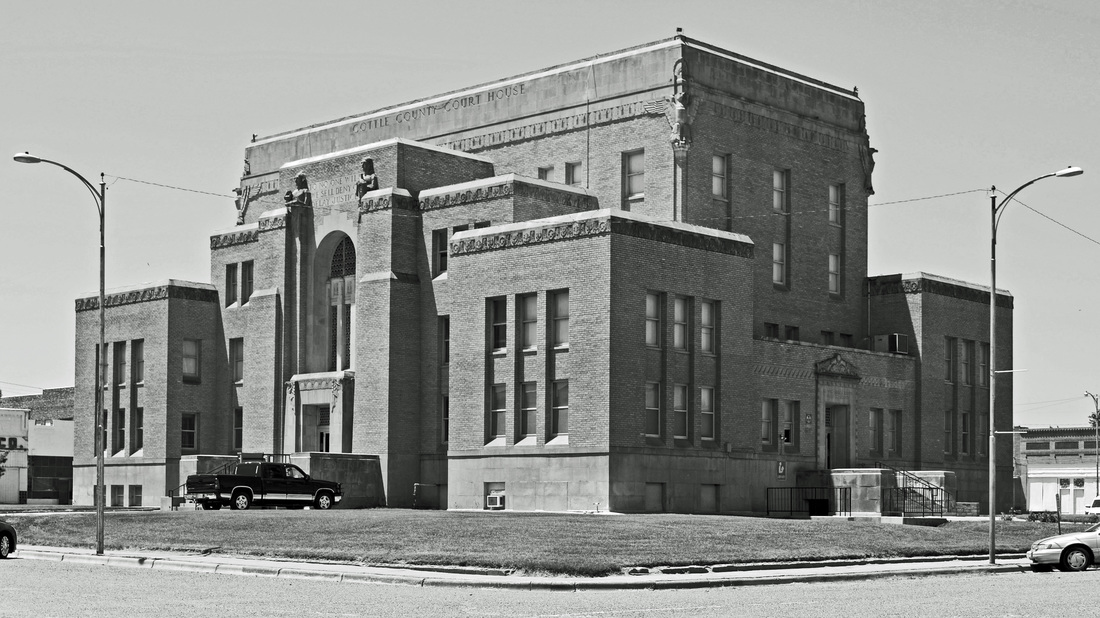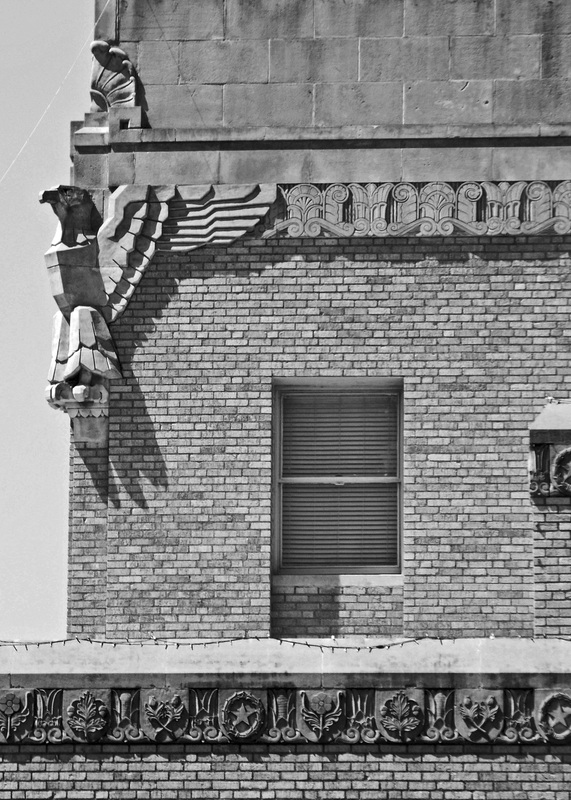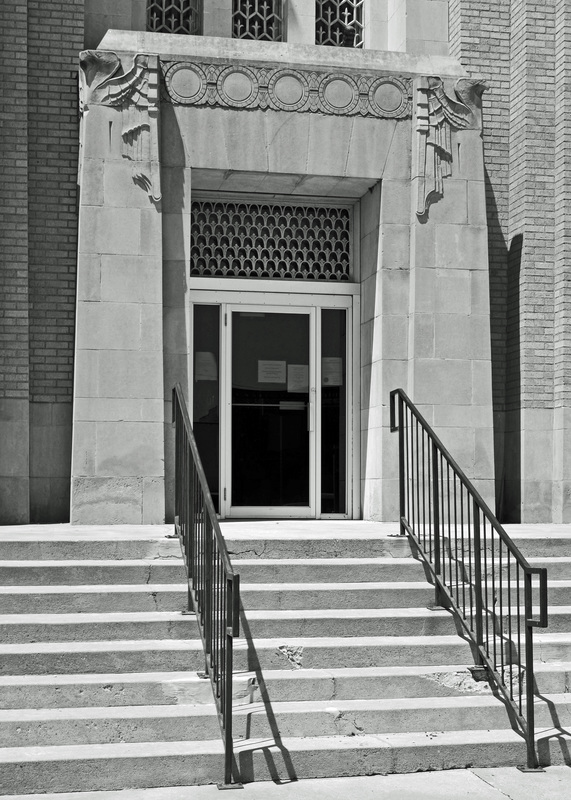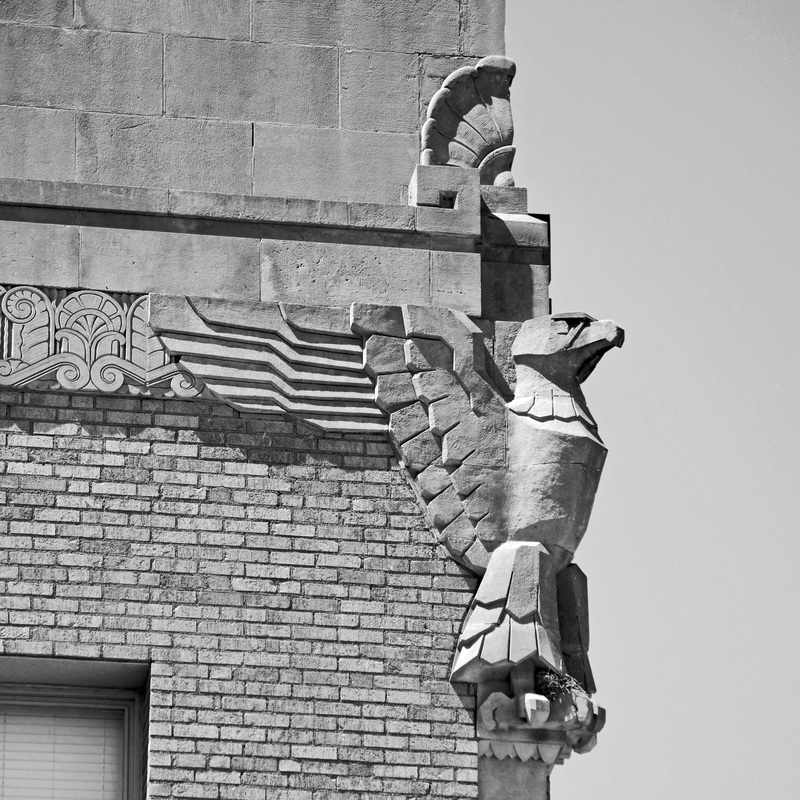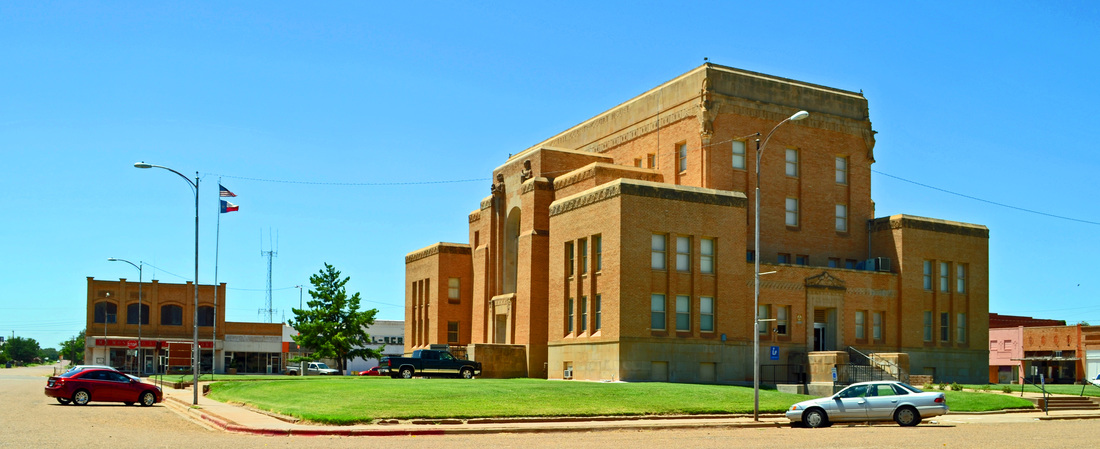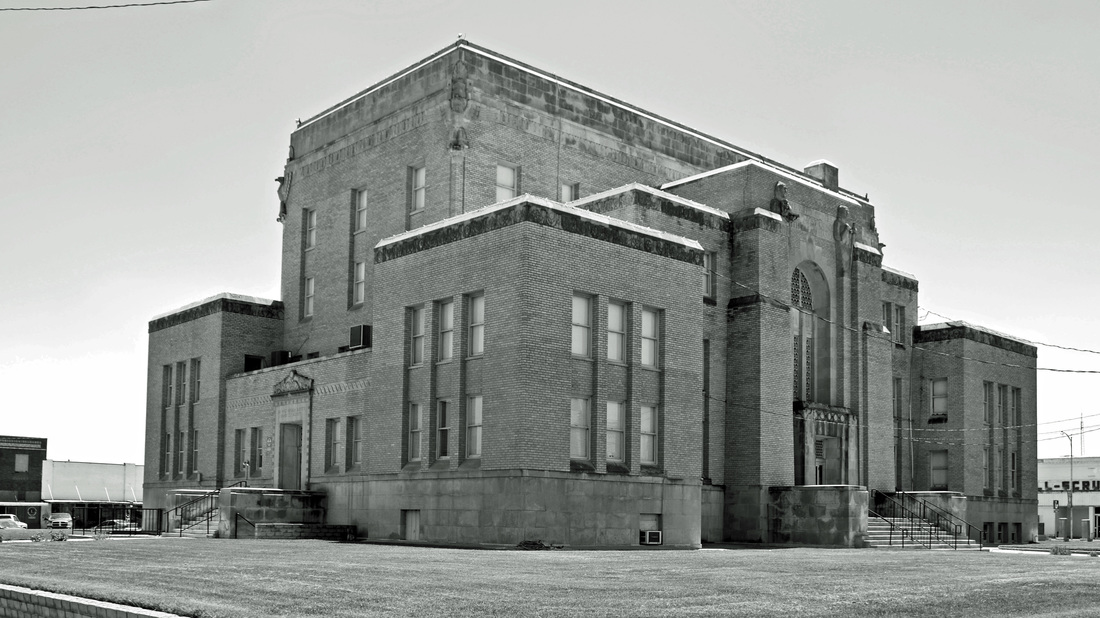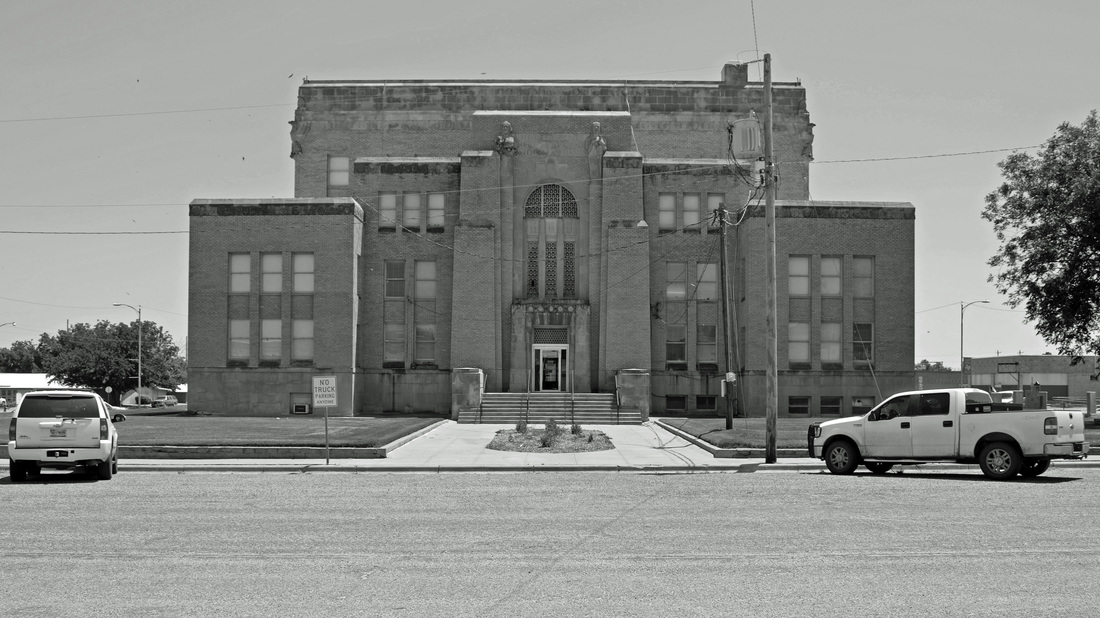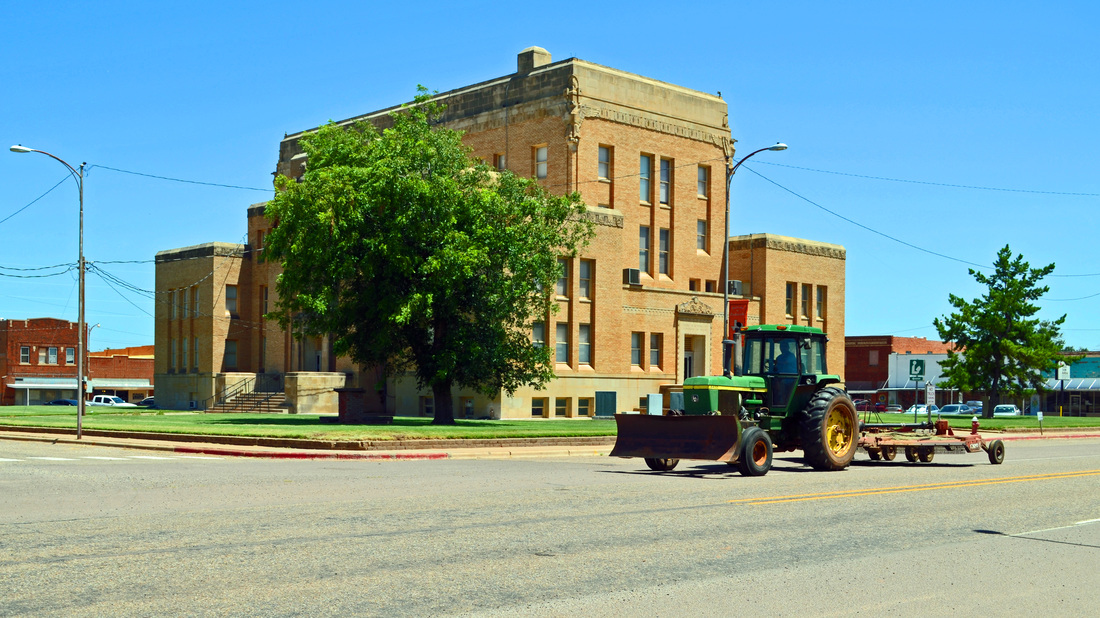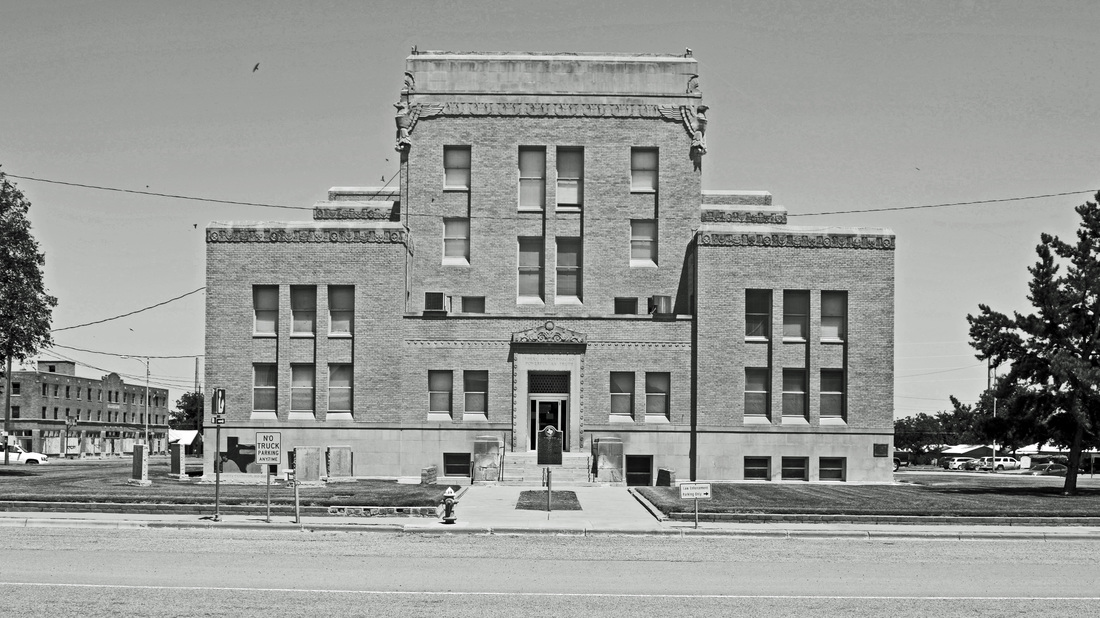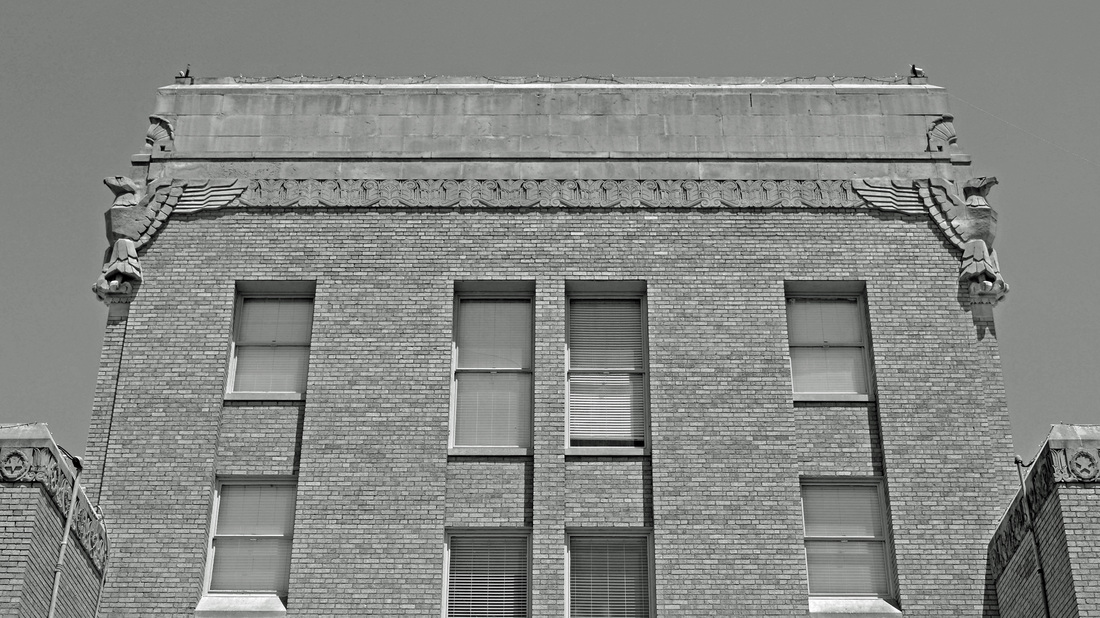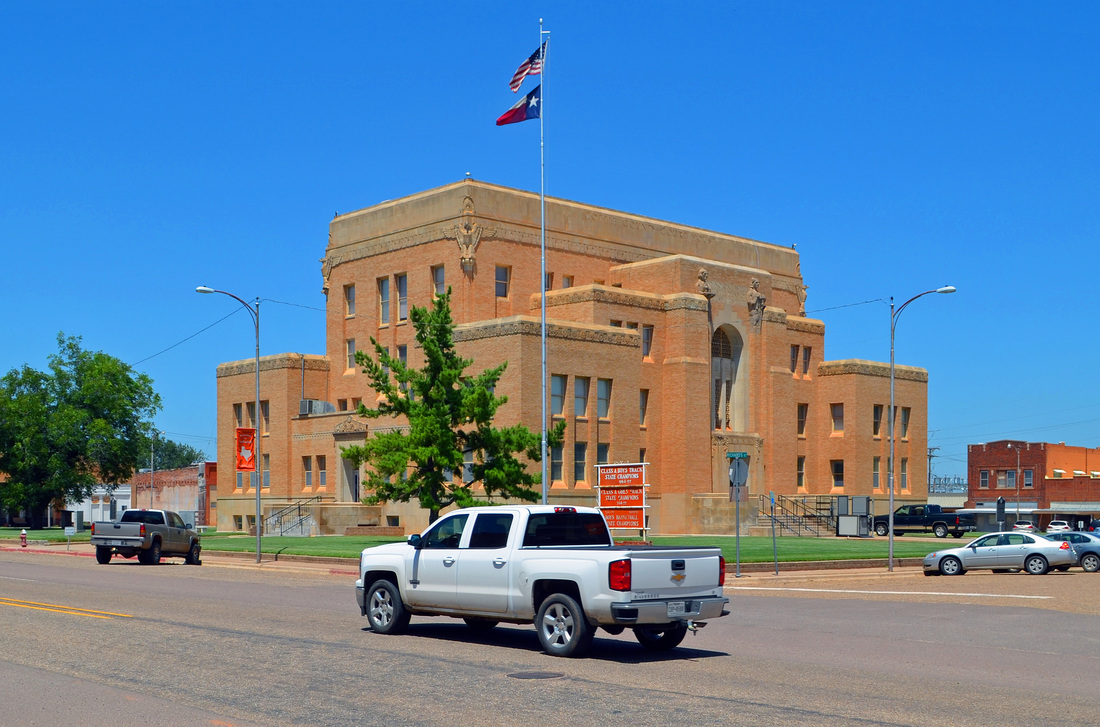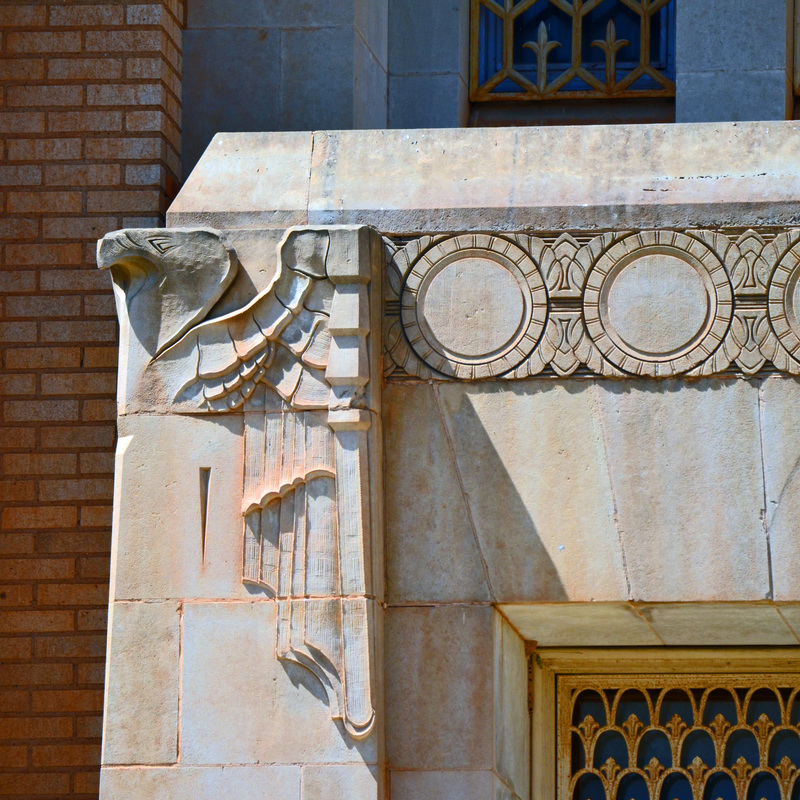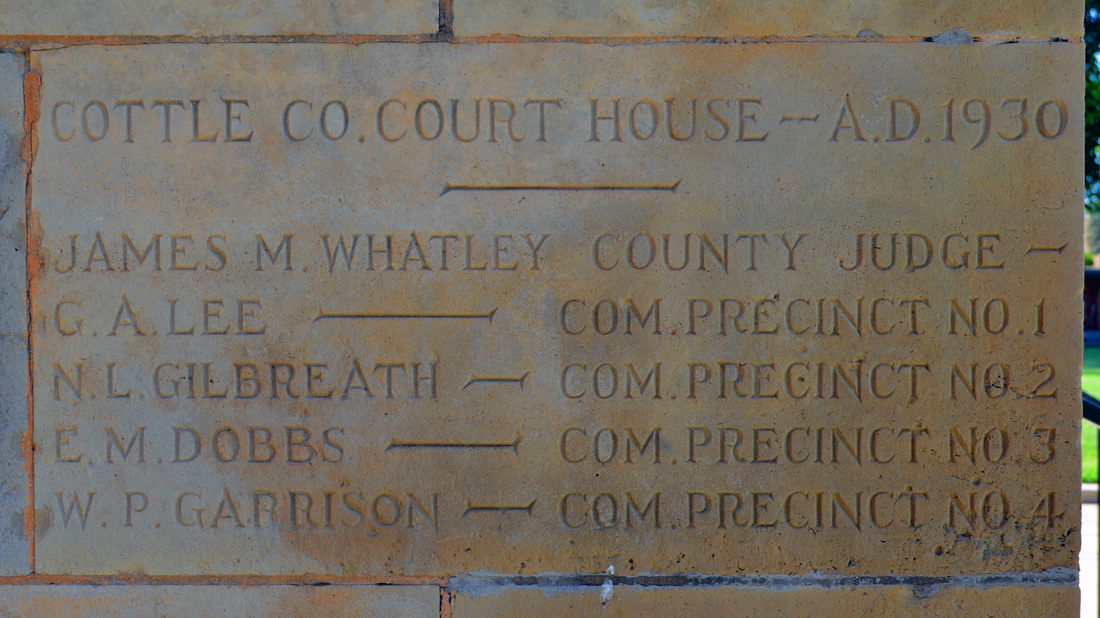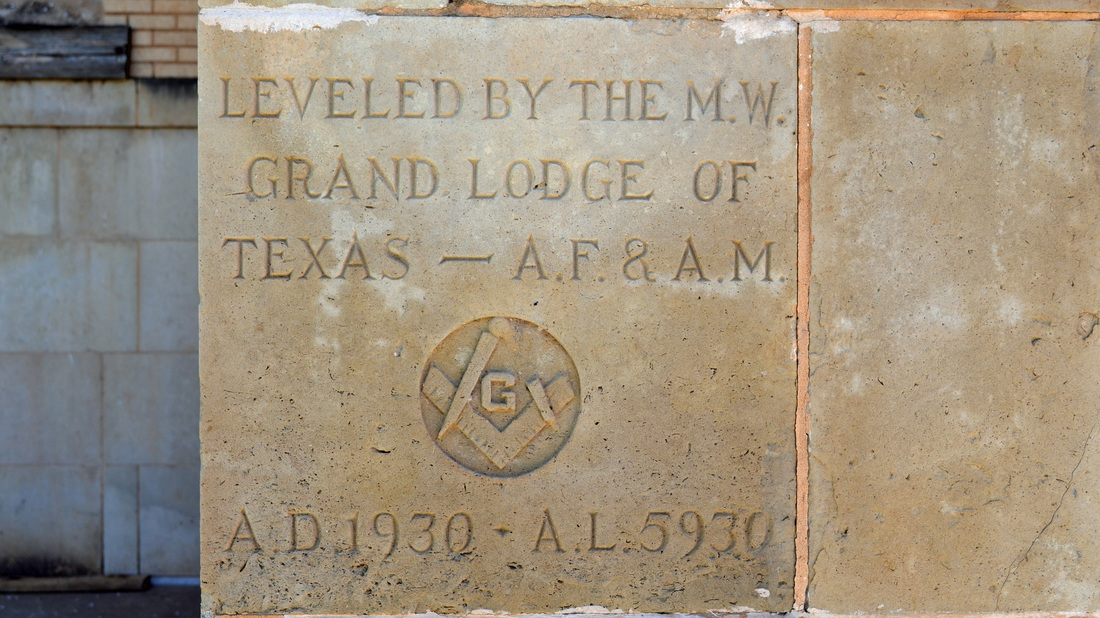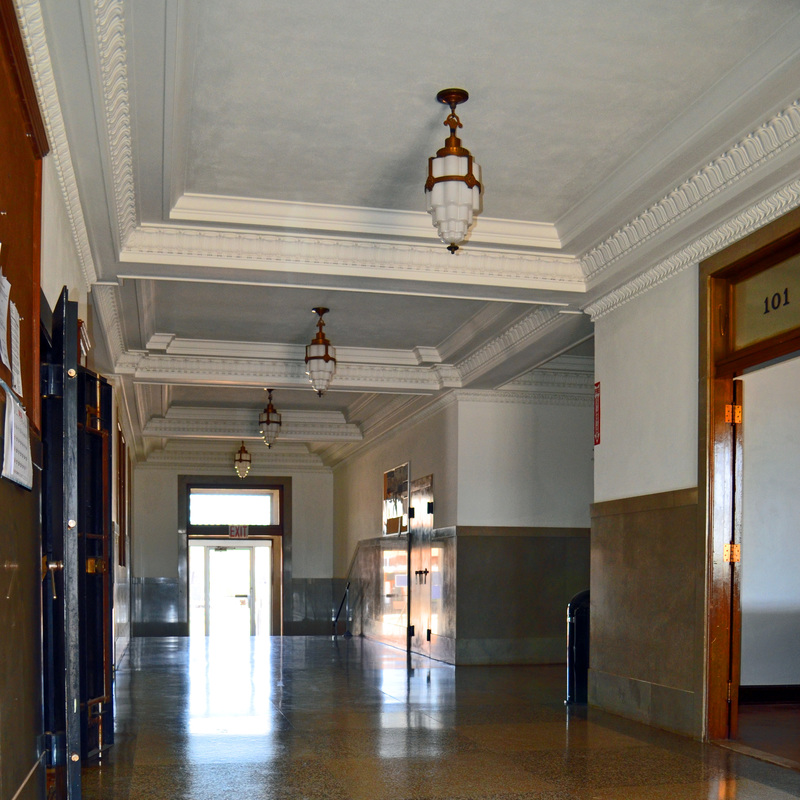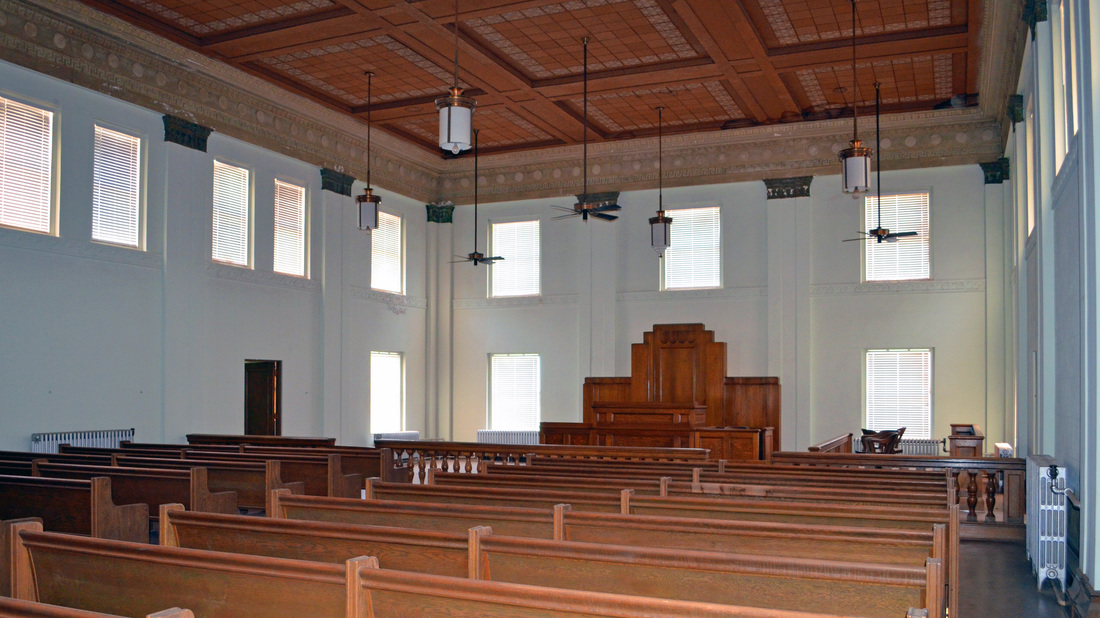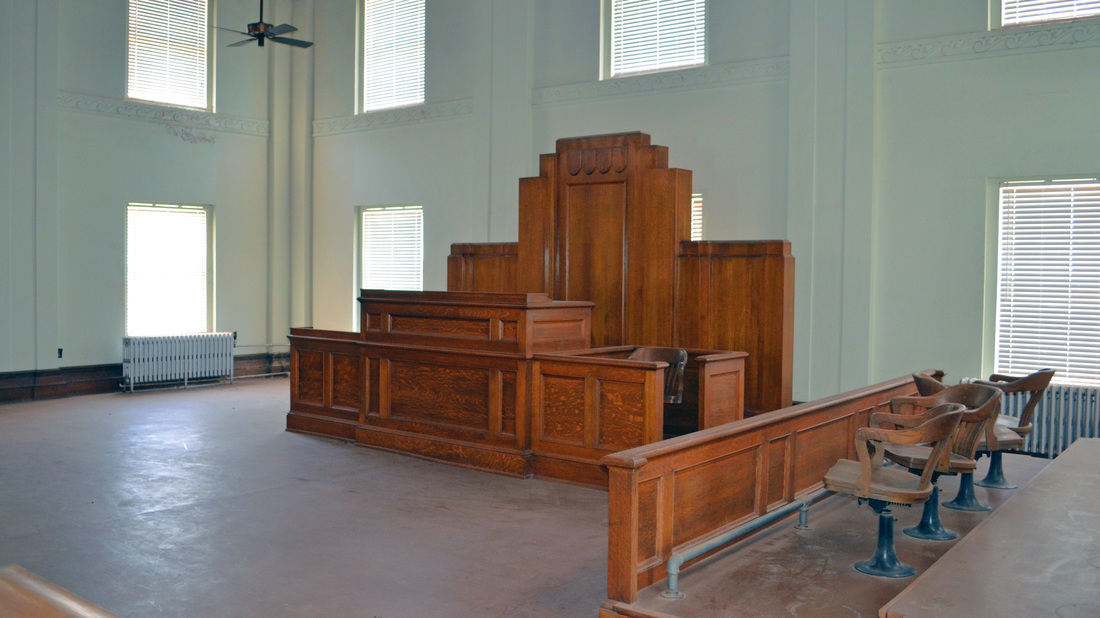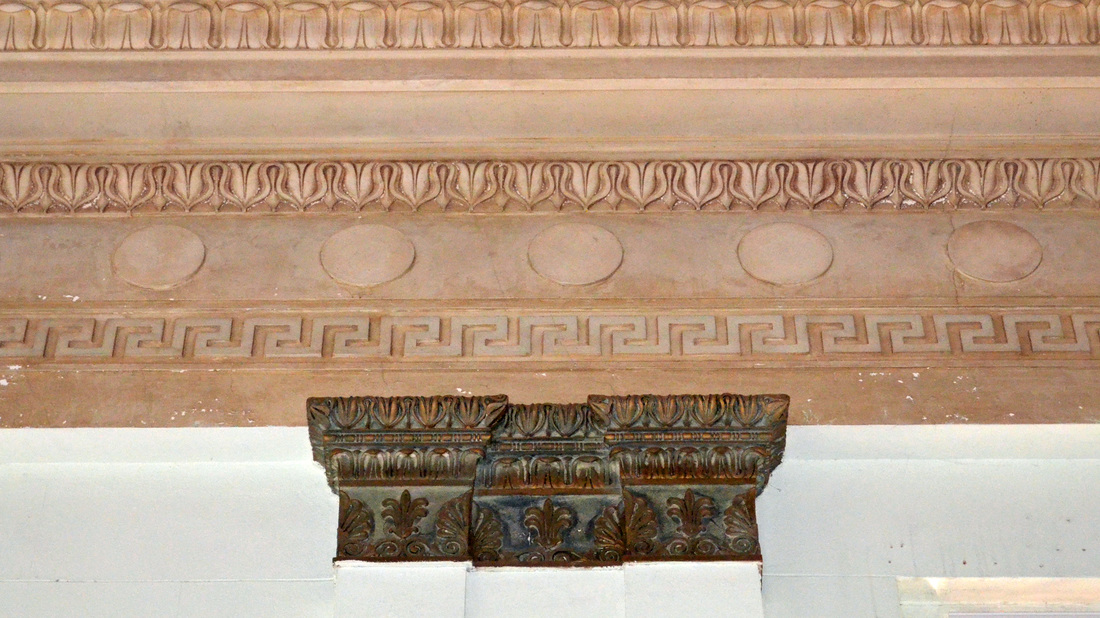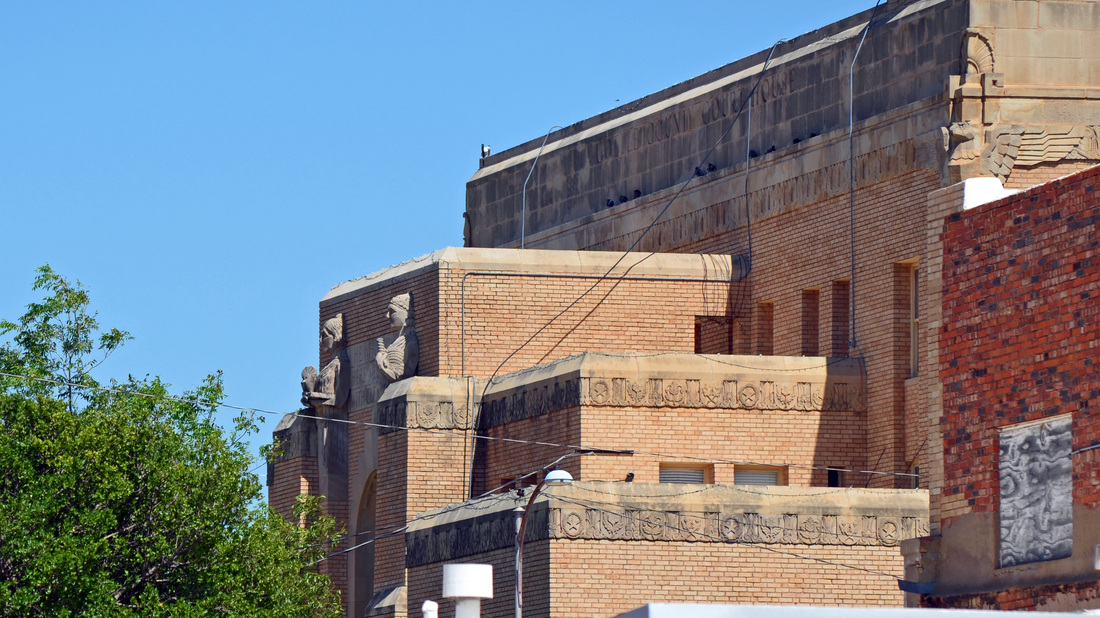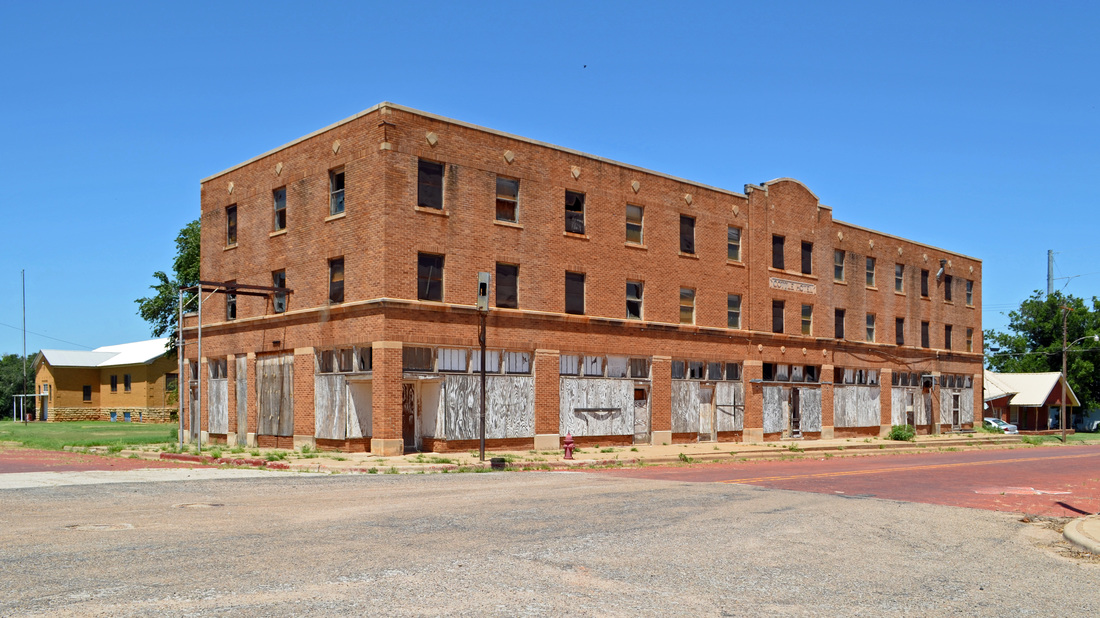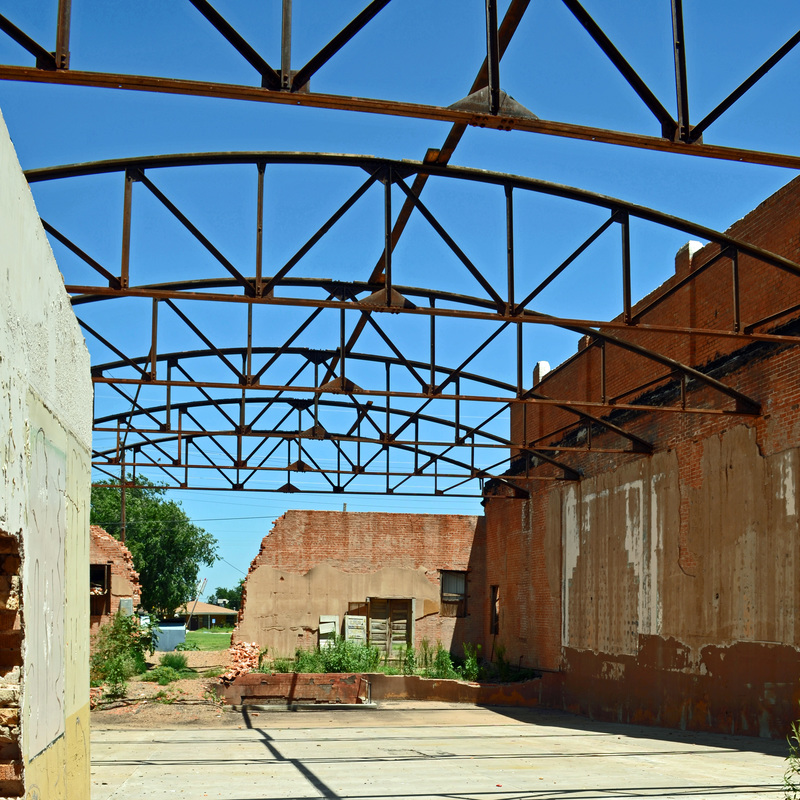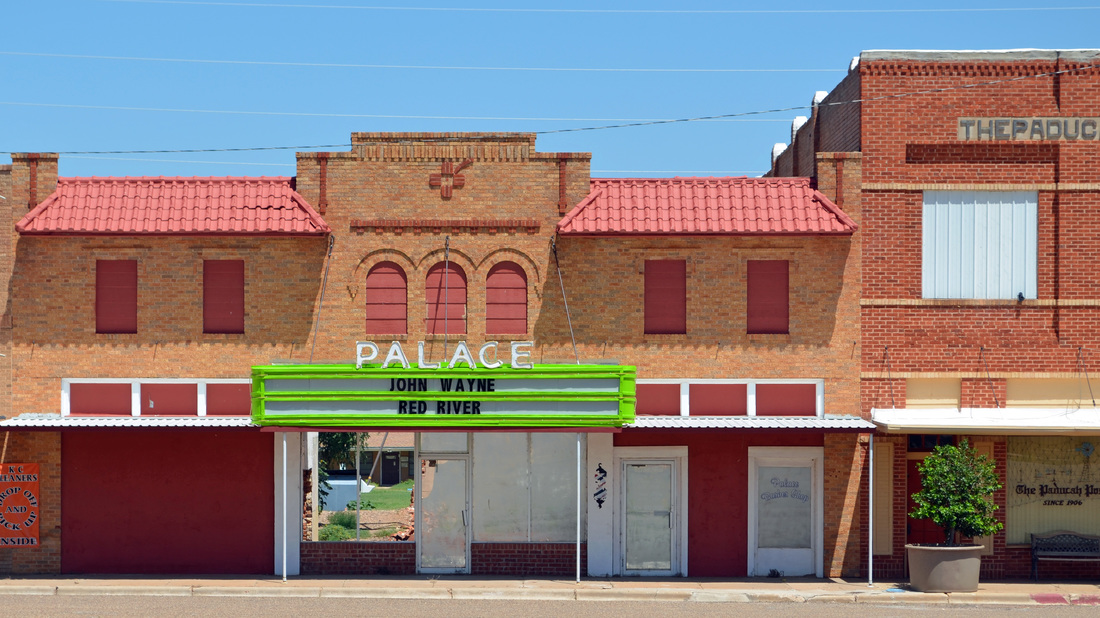239 of 254 Cottle County Courthouse, Paducah, Texas. County Population: 1,505
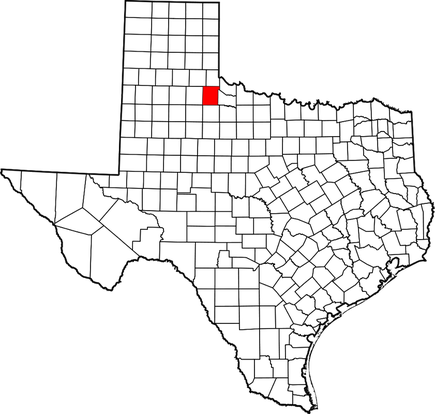 Cottle County, Texas
Cottle County, Texas
"Cottle County, in the rolling prairieland of Northwest Texas below the High Plains, is bordered on the north by Childress County, on the west by Motley County, on the south by King County, and on the east by Foard and Hardeman counties. Cottle County has an area of 900 square miles. The terrain is rough in the west and level in the east. Gray, black, sandy, and loam soils predominate. The county drains through the Pease, Tongue, and Little Wichita rivers. Elevations vary between 1,600 and 2,100 feet above sea level.
"The Texas legislature established Cottle County in 1876 and attached it for administrative purposes to Fannin County until 1887, when it became attached to Childress County. The county was named for George Cottle, who died at the Alamo.
"In the fifteen years between the county's inception and its formal organization, it remained largely a grazing area. Some cattle were apparently brought in from New Mexico, and ranches such as the OX, SMS, and Matador established their headquarters in the area. The census of 1880 showed only twenty-four persons living in Cottle County.
"Cottle County was organized in 1892, with Paducah as county seat. The population rose from 1,002 in 1900 to 4,396 in 1910, 6,901 in 1920, and 9,395 in 1930. This trend was reversed during the 1930s by the Great Depression and the Dust Bowl. By 1940, only 7,072 people remained. The county's population dropped to 6,099 by 1950, to 4,207 by 1960, to 3,204 by 1970, and 2,947 by 1980; in 1990 residents numbered 2,247."
John Leffler, "COTTLE COUNTY," Handbook of Texas Online
"The Texas legislature established Cottle County in 1876 and attached it for administrative purposes to Fannin County until 1887, when it became attached to Childress County. The county was named for George Cottle, who died at the Alamo.
"In the fifteen years between the county's inception and its formal organization, it remained largely a grazing area. Some cattle were apparently brought in from New Mexico, and ranches such as the OX, SMS, and Matador established their headquarters in the area. The census of 1880 showed only twenty-four persons living in Cottle County.
"Cottle County was organized in 1892, with Paducah as county seat. The population rose from 1,002 in 1900 to 4,396 in 1910, 6,901 in 1920, and 9,395 in 1930. This trend was reversed during the 1930s by the Great Depression and the Dust Bowl. By 1940, only 7,072 people remained. The county's population dropped to 6,099 by 1950, to 4,207 by 1960, to 3,204 by 1970, and 2,947 by 1980; in 1990 residents numbered 2,247."
John Leffler, "COTTLE COUNTY," Handbook of Texas Online
I visited Cottle County and photographed the courthouse in Paducah on Wednesday, July 15, 2015. In my opinion, the Cottle courthouse is one of the five best in Texas. This magnificent courthouse is largely original and unaltered. It's one of the finest courthouses in Texas that few people have ever seen. It occupies the center of a large square, surrounded by historic, and now mostly empty commercial buildings. Simply put, there aren't enough people in Cottle County to justify such a large courthouse. When it was constructed in 1930, the county population was 9,395. In the 2010 census the county counted only 1,505 citizens. The grand district courtroom on the top floor is unused. When court is in session, it now meets in a smaller room on the second floor.
